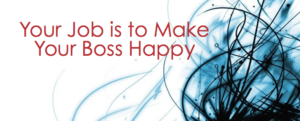by Charles Plant | Oct 19, 2016 | Emotional Intelligence
 I was surprised to read in the Globe that Guy Laurence had been turfed as Roger’s CEO but I wasn’t surprised about why. Apparently he had a rocky relationship with the Rogers family who still have control of the company Ted Rogers built.
I was surprised to read in the Globe that Guy Laurence had been turfed as Roger’s CEO but I wasn’t surprised about why. Apparently he had a rocky relationship with the Rogers family who still have control of the company Ted Rogers built.
I had heard from people inside Rogers that he was doing some great work, work that changed fundamentally how they did business and served the customer but that work would take a while to pay off.
While he may have been doing good work he apparently had a brash style and was disrespectful in his dealings with certain members of the Rogers family. In the end, it didn’t matter how good a job he was doing, it only mattered how his bosses felt.
People, (and engineers), you really have to take this one to heart. It doesn’t matter how well you think you’re doing your job. If your boss isn’t happy then you’re toast.
It’s this emotional intelligence thing rearing its ugly head again. We can curse Maya Angelou for saying “I’ve learned that people will forget what you said, people will forget what you did, but people will never forget how you made them feel” but we can’t get around it.
It’s a bitter pill to swallow, particularly for left-brained professionals but technical merit alone won’t help you get ahead at work. Having the right answer all the time doesn’t matter. Delivering expected results will only get you so far.
Ultimately, it only matters how your boss feels about your work. Yes, I know you have to deliver baseline results so you don’t get fired for being a complete write-off but beyond that, success doesn’t come from excellence, it comes from happiness, in this case, your boss’s.
Now I must confess that it took me over 30 years to learn this lesson myself and perhaps that’s why I haven’t had many bosses in my career.
So all of you lawyers, accountants, engineers, scientists and programmers out there, if you want a successful career, repeat after me: “My job is to make my boss happy.”
by Charles Plant | Apr 5, 2016 | Leadership Development
 For some reason, I’ve had three conversations within the last few days, all on the subject of ambiguity. This isn’t a concept that we talk about all the time so I have found it odd that I’m encountering it more on a daily basis.
For some reason, I’ve had three conversations within the last few days, all on the subject of ambiguity. This isn’t a concept that we talk about all the time so I have found it odd that I’m encountering it more on a daily basis.
The first conversation was with a friend whose life is undergoing change. She is transitioning from one long term job into a more entrepreneurial life and she is very unsettled, not being sure how the transition will evolve.
It has been a long time since she has been in such an ambiguous situation and for one who thrives on having a very well defined to-do list, the idea of not knowing what to put on that list is causing emotional turmoil.
The second conversation was with another friend who was trying to figure out how to improve the teaching of leadership in a modern workplace. She knew that the transition from the industrial economy to the knowledge economy had changed how we need to lead and was exploring concepts that explained that change.
Resolving ambiguity came up as a key to success in leadership roles in the knowledge economy. It is much harder now to identify and measure success so leaders need to help employees in their struggles to turn ambiguous situations into actionable plans.
And finally, I was attending a presentation by students who had just finished an internship course at U of T. A number of students expressed both surprise and dismay that when they started their internship, they weren’t told exactly what they had to do. They had to figure it out themselves.
School, with its highly defined system for measuring success, doesn’t lend itself to ambiguous situations that are encountered in the workplace.
As time goes on, I suspect more and more of us will have to face high levels of ambiguity on a daily basis. Success will come to those who can not only cope with it but who can embrace ambiguity and figure out for themselves how to achieve success.
by Charles Plant | Oct 5, 2015 | Leadership Development, Uncategorized

We’re doing something wrong in promoting gender equality and I think it starts all the way back to how we name babies. We have a patrilineal naming tradition that asserts to a baby girl that her father is more important than her mother. To me this is the beginning of gender inequality.
As my daughter is now expecting my first grandchild and it is to be a girl, I want her to start life thinking that she is just as important as any boy who is born. To do that I’m advocating a new tradition that a girl’s last name be the same as her mother’s last name.
I’ve written an essay that got published in the Globe and Mail today. It explains a new solution to stop gender inequality at birth.
Pass it on and be a part of a new trend towards true gender equality.
Check out the essay here.
by Charles Plant | Sep 11, 2015 | Leadership Development
 One of my faithful readers pointed out a comment I made in my last post about Open Dialogue. It was when I referred to my reluctance to speak up recently about a bonehead move by a co-worker.
One of my faithful readers pointed out a comment I made in my last post about Open Dialogue. It was when I referred to my reluctance to speak up recently about a bonehead move by a co-worker.
He said that in his experience, “Maybe the problem is that boneheaded moves slip by because nobody actually pays attention to boneheads in the first place. The other thing is that some bonehead invited the bonehead to participate in the dialogue, so we’re faced with a self-perpetuating bonehead circle of life.”
And that one comment opened up a whole new window to business behaviour. There are bonehead circles that arise in business when one bonehead hires another one, and then another one, and before long you have a group of boneheads.
If you’re thrust into a circle of these boneheads, it may seem surreal. You might wonder why everyone around you is thinking or acting in such a strange way. This is not quite as bad though as when you start to agree with them or act in the same way. Then you must wonder, have you become a bonehead too?
I think this is what happens over time. You get one or two boneheads in a group and entropy sets in. Sooner or later everyone begins to think and act in the same way and you have a bonehead circle.
That’s when the problems start. Bonehead circles can’t see problems or opportunities. They don’t recognize danger or come up with new, innovative and creative ideas. When you’ve got a bonehead circle no one is able to criticize other members of the circle.
And the inevitable result is like watching a good business get flushed down the toilet, boneheads and all.
by Charles Plant | Sep 8, 2015 | Leadership Development
 I was naughty the other day and am feeling slightly guilty about it. Essentially, I found myself not willing to share my honest opinion and thus breaching all my rules about open dialogue.
I was naughty the other day and am feeling slightly guilty about it. Essentially, I found myself not willing to share my honest opinion and thus breaching all my rules about open dialogue.
I have always said it is better in a startup and in working with a close team that everyone be free to open up, share his or her opinion in a constructive manner and let the chips fall where they may. Honestly and open dialogue being the best policies.
But I have been criticized for being too critical. (What’s with that?) And since I’m constantly trying to remind myself to use more emotional intelligence (not being noted for that skill), I hung back and didn’t share my honest opinion.
This has led me to struggle with trying to figure out the best balance. How do you practice open dialogue but not be seen as being critical when someone is about to pull a totally boneheaded move?
Some people are great with criticism and others totally shy away from it, abhor it. Do you change your behaviour for those who don’t like criticism or do you just let loose and figure it is their problem.
I can hear those of you who are emotional intelligence gurus trying to tell me that you can deliver a critical message in an open manner and not turn the recipient into a quivering pile of goo. But sometimes it is easier just to stop with the open dialogue and shut up.
What I have decided is that we really need a Festivus Pole at work, available every day. It can be used just like during Festivus, for airing of grievances.
That way, if you’re touching the pole you get a complete bye on critical dialogue. And maybe the pole might even make you think best about how to communicate criticisms in a constructive manner.
by Charles Plant | Jun 16, 2015 | Leadership Development
Today’s TED Talk made me think long and hard about the issue of culture in startups, especially about how to create a culture of helpfulness. The research on the subject is quite clear, that helpful cultures outperform unhelpful ones hands down.
I’m struggling though with whether a culture of helpfulness is at odds with a results oriented culture. Is it possible to have both? If helpfulness leads to better results, should you focus on the end goal or on the process to get there?
I’m disturbed that I may have been mistaken my whole life, trying to create results oriented cultures when I know I would much rather work in a culture of helpfulness without the competition.
I left an organization a number of years because I just didn’t enjoy working there. I had ended up in a job I didn’t like and that was a good enough reason but fundamentally I didn’t like the organization.
Since then, I’ve struggled to define what it was exactly that I didn’t like. Over the years I have identified a number of factors that influenced my decision but until I watched this TED Talk, I didn’t see the whole reason. And that reason was that there was not a culture of helpfulness.
There may have been helpfulness within various teams in the organization but fundamentally there was no helpfulness between teams. Each team had its own budget and there was intense competition for and jealousy of other teams budgets. Results were team based and not organization based and there was intense competition to see who could be the shining star, individually or as a team.
This resulted in a general lack of helpfulness between teams, in fact it was so bad that teams would encroach upon each other, stealing good ideas and replicating programs. There was poor handoff of clients between teams and even a competition between teams for clients.
The problem was, that as bad as it was, the organization was not open to change. And his made it extremely frustrating when you needed to get things done in conjunction with another team. While the problems were easy to see and the consequences quite predictable, the organization was not open to analytical self criticism. Eschewing self-critical analysis, it buried conflict because candor was not safe.
Anyway, enough of my lamenting. Watch the video and think about your own organization. And if you need to either create or go find a culture of helpfulness.
 I was surprised to read in the Globe that Guy Laurence had been turfed as Roger’s CEO but I wasn’t surprised about why. Apparently he had a rocky relationship with the Rogers family who still have control of the company Ted Rogers built.
I was surprised to read in the Globe that Guy Laurence had been turfed as Roger’s CEO but I wasn’t surprised about why. Apparently he had a rocky relationship with the Rogers family who still have control of the company Ted Rogers built.



